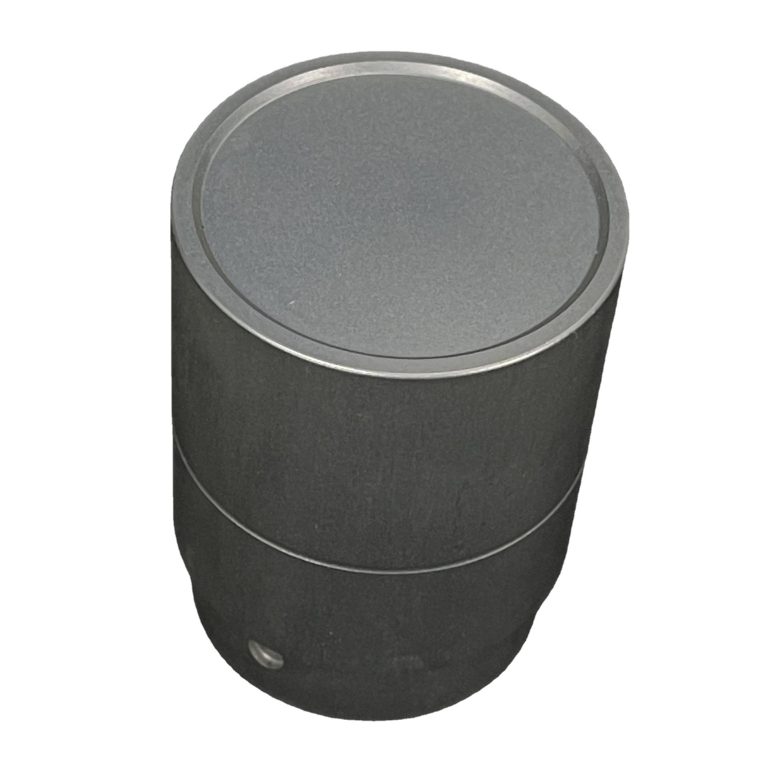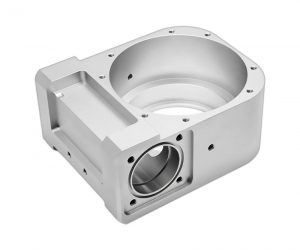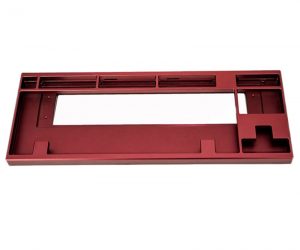Learn how 3D printing in medicine is changing healthcare. It's offering custom solutions that save lives, like special prosthetics and even complex tissue work.
I. Paradigm Shift in Healthcare Delivery: Beyond the Scalpel's Reach
A. The Ontological Transformation of Medical Intervention: The healthcare ecosystem is undergoing a radical ontological shift, propelled by the disruptive potential of medical 3D printing. This technology transcends mere additive manufacturing; it represents a fundamental reimagining of clinical practice, research methodologies, and the very definition of personalized medicine. The implications extend far beyond the creation of prosthetics and implants; they encompass a transformative impact on surgical planning, pharmaceutical development, and the burgeoning field of regenerative bioengineering. The resultant paradigm shift necessitates a critical examination of its ethical, logistical, and societal ramifications.
B. Precision Medicine's Algorithmic Genesis: The core innovation lies not merely in the creation of patient-specific devices, but in the algorithmic precision that underpins their design and fabrication. Medical 3D printing facilitates a transition from generalized therapeutic approaches to a hyper-personalized, data-driven model. This transition necessitates the integration of sophisticated imaging modalities, advanced bioinformatics, and machine learning algorithms to optimize treatment efficacy and minimize adverse events. The resulting convergence of computational biology and additive manufacturing promises to redefine the boundaries of therapeutic intervention.
II. Technological Convergence: A Symphony of Additive Manufacturing and Biomaterials
A. The Additive Manufacturing Arsenal: The efficacy of medical 3D printing hinges on a diverse array of additive manufacturing techniques, each optimized for specific biomaterial properties and clinical applications. While Fused Deposition Modeling (FDM) and Stereolithography (SLA) remain prevalent, the increasing adoption of Selective Laser Melting (SLM), Binder Jetting, and Digital Light Processing (DLP) technologies underscores the field's dynamic evolution. The selection of an optimal technique necessitates a nuanced understanding of material properties, desired resolution, and the inherent limitations of each process. Furthermore, the emergence of novel techniques such as bioprinting, utilizing living cells and bioinks, promises to revolutionize tissue engineering and regenerative medicine.
B. Biomaterial Innovation: Bridging the Bio-Synthetic Divide: The development of biocompatible materials represents a critical bottleneck in the advancement of medical 3D printing. The field demands materials exhibiting not only biocompatibility and biodegradability but also tunable mechanical properties, controlled drug release capabilities, and the potential for integration with living tissues. The exploration of novel bioinks, incorporating cells, growth factors, and extracellular matrix components, is paramount for the creation of functional, implantable tissues and organs. This necessitates a multidisciplinary approach, integrating materials science, biomedical engineering, and cell biology.
C. The Digital Anatomical Blueprint: Bridging Imaging and Design: The transformative potential of medical 3D printing is inextricably linked to advancements in medical imaging and Computer-Aided Design (CAD) software. High-resolution imaging modalities, such as multi-modal CT scans, MRI, and advanced ultrasound techniques, provide the foundational anatomical data. This data is then processed using sophisticated CAD software, incorporating algorithms for anatomical reconstruction, surgical simulation, and the generation of highly accurate 3D models. The seamless integration of these digital workflows is critical for ensuring the accuracy, precision, and safety of 3D-printed medical devices. The future trajectory of this field hinges on the development of increasingly sophisticated algorithms for image processing, model generation, and the optimization of printing parameters.
III. Advanced Applications Across Diverse Medical Disciplines
A. Personalized Bio-Integrated Prosthetics and Orthotics: Beyond mere anatomical replication, additive manufacturing facilitates the creation of bio-integrated prosthetics and orthotics. This involves the incorporation of biocompatible materials and potentially bioactive agents to promote osseointegration and minimize immune rejection. Design parameters extend beyond simple geometric fidelity to encompass intricate microstructural features that enhance biomechanical performance and sensory feedback, thereby achieving a level of functional integration previously unattainable. The iterative design process, enabled by rapid prototyping, allows for continuous refinement based on real-time patient data, leading to adaptive and evolving prosthetic solutions.
B. Precision Surgical Planning and Anatomically Accurate Predictive Modeling: The limitations of two-dimensional imaging are overcome through the generation of three-dimensional anatomical models. These models, derived from multi-modal imaging data (CT, MRI, PET) and processed via advanced image registration and segmentation algorithms, provide surgeons with unparalleled pre-operative visualization capabilities. Furthermore, the ability to simulate surgical procedures on these models allows for the identification and mitigation of potential complications, leading to improved surgical precision and reduced invasiveness. This predictive modeling extends to the assessment of post-operative outcomes, facilitating personalized treatment strategies and optimizing patient recovery trajectories.
C. Bioprinting and Regenerative Biofabrication: The field of bioprinting transcends simple tissue scaffolding. Current research focuses on the development of bio-inks containing multiple cell types, growth factors, and extracellular matrix components, arranged in precisely defined spatial patterns to mimic the complex microarchitecture of native tissues. This approach enables the creation of functional, vascularized tissues and organs, addressing the critical limitations of traditional transplantation methods. Furthermore, the integration of microfluidic channels and biosensors within bioprinted constructs allows for real-time monitoring of tissue development and function, providing valuable insights into the regenerative process.
D. Customized Implantable Devices and Bioresorbable Scaffolds: Additive manufacturing empowers the creation of patient-specific implants with intricate geometries and surface textures optimized for bone integration and stress distribution. This extends beyond traditional metallic implants to encompass bioresorbable scaffolds designed to degrade over time, eliminating the need for secondary surgical procedures. The precise control over material properties and scaffold architecture allows for tailored biodegradation profiles and mechanical support, promoting optimal tissue regeneration. This paradigm shift towards bioresorbable materials minimizes the long-term risks associated with permanent implants.
IV. Advantages of Medical Additive Manufacturing: A Paradigm Shift in Healthcare Delivery
A. Unprecedented Precision and Anatomical Conformity: The inherent design flexibility of additive manufacturing allows for the creation of devices with unprecedented anatomical conformity. This precision extends to the micro-scale, enabling the fabrication of features that precisely match the patient's unique anatomy and biomechanical requirements. This level of customization surpasses the capabilities of traditional subtractive manufacturing techniques, leading to improved implant stability, reduced stress shielding, and enhanced functional outcomes.
B. Accelerated Time to Treatment and Enhanced Efficiency: The ability to rapidly prototype and manufacture patient-specific devices eliminates the delays associated with traditional manufacturing processes. This streamlined workflow reduces lead times, enabling faster treatment and improved patient outcomes, particularly in critical care settings. Furthermore, the reduced need for inventory management and the ability to produce on-demand devices optimize resource allocation and reduce overall healthcare costs.
C. Cost-Effectiveness and Scalable Manufacturing: While initial investment in additive manufacturing technology may be significant, the long-term cost-effectiveness is demonstrable. The reduction in material waste, simplified manufacturing processes, and elimination of tooling costs contribute to a lower overall cost per device. Furthermore, the scalability of additive manufacturing allows for the efficient production of customized devices for a large patient population, making advanced medical technologies more accessible and affordable.
V. Challenges and Contingencies in the Advancement of Medical Additive Manufacturing
A. Quality Assurance and Regulatory Harmonization: A Complex Interplay
The exponential growth of medical 3D printing necessitates a paradigm shift in quality control methodologies and regulatory frameworks. Ensuring the biocompatibility, mechanical integrity, and functional efficacy of additively manufactured medical devices and implants demands rigorous, multi-faceted testing protocols exceeding current ISO standards. This necessitates the development of novel, statistically robust validation techniques capable of addressing the inherent variability introduced by the additive manufacturing process itself. Furthermore, achieving global regulatory harmonization presents a significant hurdle, requiring collaborative efforts between international regulatory bodies to establish universally accepted standards and streamline the approval process for novel medical devices fabricated via additive manufacturing. Failure to address these challenges risks impeding innovation and potentially compromising patient safety.
B. Technological Assimilation and Clinician Proficiency: Bridging the Gap
Successful integration of additive manufacturing into clinical practice demands a multifaceted strategy addressing both technological and human capital limitations. Healthcare institutions must invest in advanced equipment, sophisticated software, and comprehensive training programs to ensure clinician proficiency in the design, fabrication, and clinical application of 3D-printed medical devices. This necessitates a paradigm shift in medical education, incorporating additive manufacturing principles and techniques into existing curricula. Furthermore, the development of intuitive, user-friendly software interfaces will be crucial in facilitating seamless integration into existing clinical workflows and minimizing the learning curve for healthcare professionals. The failure to adequately address these challenges will likely result in suboptimal utilization of this transformative technology.
C. Ethical Quandaries and Data Security: Navigating the Uncharted Territory
The advent of personalized medicine via additive manufacturing introduces complex ethical and data security considerations. The creation of patient-specific medical devices necessitates the acquisition, processing, and storage of sensitive patient data, raising concerns regarding data privacy, security, and potential misuse. Robust data encryption protocols, anonymization techniques, and stringent access control measures are paramount to mitigate these risks. Furthermore, the potential for intellectual property infringement and the ethical implications of personalized medical devices require careful consideration and the development of comprehensive legal and ethical guidelines. The lack of a robust ethical framework could stifle innovation and erode public trust in this rapidly evolving field.
VI. Paradigm-Shifting Applications and Illustrative Case Studies
A. Reconstructive Surgery: Redefining Anatomical Restoration
Additive manufacturing has revolutionized reconstructive surgery, enabling the creation of highly customized implants and prosthetics tailored to individual patient anatomy. This technology facilitates the precise reconstruction of complex craniofacial structures, the fabrication of patient-specific bone grafts, and the development of biocompatible tissue scaffolds. Beyond simple anatomical restoration, additive manufacturing allows for the integration of advanced functionalities, such as integrated sensors and drug delivery systems, further enhancing the therapeutic potential of these devices. The ongoing development of bio-inks and bio-printing techniques promises even more sophisticated and personalized reconstructive solutions.
B. Pediatric Care: Addressing the Unique Challenges of Growth and Development
The application of additive manufacturing in pediatric care addresses the unique challenges posed by the dynamic nature of pediatric anatomy. The ability to create precisely sized and shaped prosthetics and orthotics that adapt to a child's growth is a significant advancement. Furthermore, the use of 3D-printed anatomical models facilitates surgical planning, patient education, and improved communication between healthcare professionals and families. This technology holds immense potential for improving outcomes and enhancing the quality of life for children with congenital anomalies.
C. Dental and Orthodontic Applications: Precision and Personalization in Oral Healthcare
Additive manufacturing has transformed dental and orthodontic practices, enabling the creation of highly accurate and customized dental prosthetics, orthodontic appliances, and surgical guides. The ability to fabricate patient-specific crowns, bridges, dentures, and aligners improves both the aesthetic and functional outcomes of dental treatments. Furthermore, the use of 3D-printed surgical guides enhances the precision and efficiency of complex dental procedures, minimizing invasiveness and improving patient comfort.
D. Personalized Pharmaceutics: Tailoring Therapeutics to the Individual
Additive manufacturing's versatility extends to the creation of personalized pharmaceuticals and drug delivery systems. The potential to fabricate patient-specific drug formulations, dosages, and release profiles opens new avenues for optimizing therapeutic efficacy and minimizing adverse effects. This technology holds immense promise for the development of targeted drug delivery systems, enhancing the effectiveness of medications and reducing systemic toxicity. The ongoing research in this area aims to revolutionize drug development and personalize therapeutic interventions.
VII. Prospective Trajectories and Technological Singularities in Medical 3D Printing
A. Convergent Technologies and Paradigm Shifts
The trajectory of medical 3D printing transcends incremental advancement; it represents a confluence of exponential technologies poised to disrupt healthcare's foundational paradigms. The integration of advanced biomaterials—including biocompatible, biodegradable, and stimuli-responsive polymers exhibiting programmable degradation profiles—with multi-material printing techniques and real-time biofeedback systems heralds a new era of personalized medicine. This convergence necessitates a re-evaluation of existing regulatory frameworks and necessitates the development of novel quality assurance protocols to manage the inherent complexities of these sophisticated systems. Failure to adapt to this rapidly evolving landscape risks technological obsolescence and a forfeiture of the immense potential benefits.
B. Disruptive Innovation and the Re-architecting of Healthcare Delivery
Medical 3D printing's impact extends beyond individual treatments; it fundamentally challenges the established architecture of healthcare delivery. The technology's capacity for on-demand, personalized fabrication disrupts traditional supply chains, enabling point-of-care manufacturing and reducing reliance on centralized production facilities. This paradigm shift necessitates a reassessment of healthcare resource allocation, workforce training, and reimbursement models. Furthermore, the potential for decentralized healthcare networks, empowered by remote patient monitoring and distributed manufacturing capabilities, presents both unprecedented opportunities and significant challenges regarding data security, regulatory compliance, and equitable access.
C. Telemedicine 2.0: Decentralized Care Enabled by Additive Manufacturing
The integration of medical 3D printing with telemedicine represents a synergistic advancement, enabling remote diagnosis, personalized device design, and on-demand fabrication of implants and prosthetics. This creates a truly decentralized healthcare ecosystem, potentially mitigating geographical barriers to access and enhancing patient autonomy. However, this advancement necessitates robust cybersecurity infrastructure, standardized data exchange protocols, and the establishment of ethical guidelines to address potential biases and ensure patient privacy in this increasingly interconnected environment. The successful implementation of this model requires careful consideration of bandwidth limitations, regulatory hurdles, and the potential for exacerbating existing health disparities.
D. Sustainability, Global Health Equity, and the Circular Economy
The environmental impact of healthcare is increasingly scrutinized. Medical 3D printing offers a pathway towards a more sustainable and equitable healthcare system. By optimizing material usage, minimizing waste generation, and enabling localized production, 3D printing can significantly reduce the carbon footprint associated with medical device manufacturing and distribution. This approach is particularly relevant in resource-constrained settings, where it can improve access to essential medical supplies and reduce reliance on fragile global supply chains. However, the long-term sustainability of this technology requires careful consideration of material sourcing, energy consumption, and the development of robust end-of-life management strategies for printed medical devices.
VIII. Conclusion: Navigating the Technological Singularity in Healthcare
Medical 3D printing represents a technological singularity in healthcare, fundamentally altering the landscape of personalized medicine, surgical planning, and regenerative therapies. While the advantages are substantial, including unprecedented levels of customization and the potential for significant cost reductions, the path forward is fraught with challenges. These include navigating complex regulatory landscapes, ensuring rigorous quality control, addressing ethical considerations, and mitigating the potential for exacerbating existing health disparities. Successfully navigating these challenges requires a collaborative effort involving healthcare providers, researchers, regulators, and industry stakeholders to unlock the transformative potential of this revolutionary technology and ensure its equitable and sustainable deployment globally.


